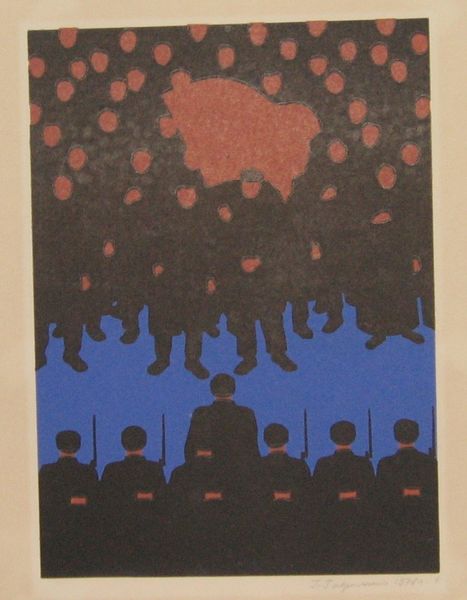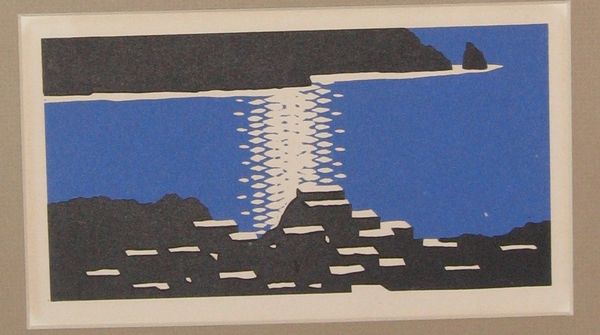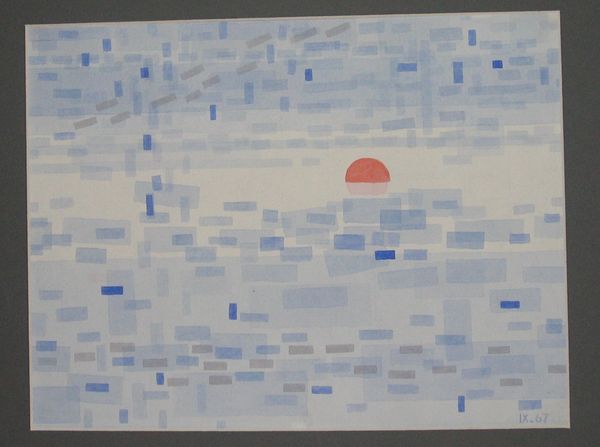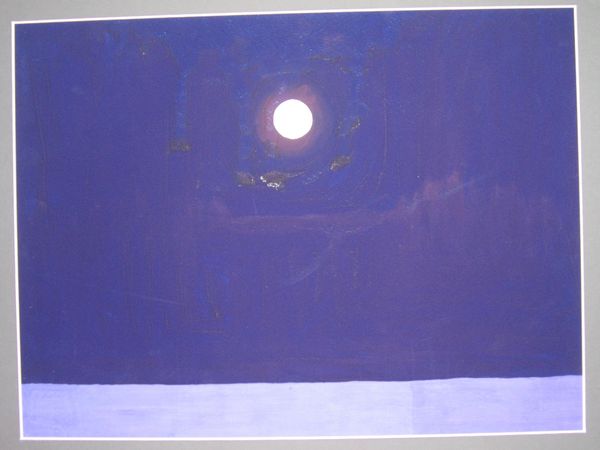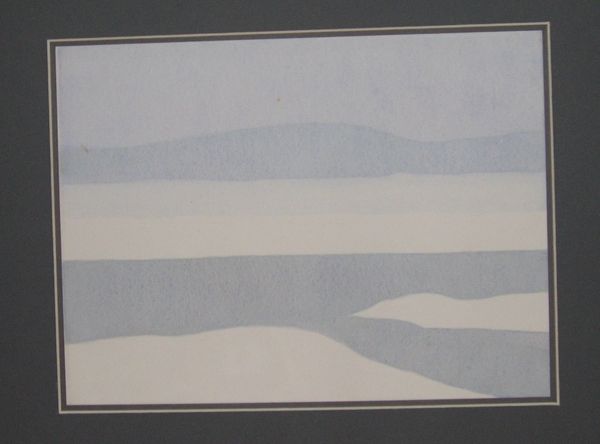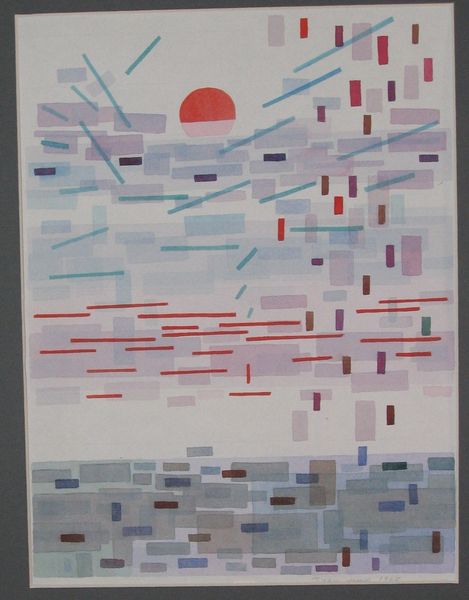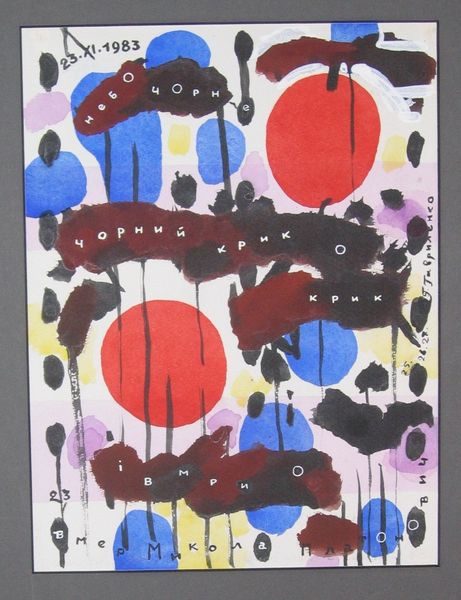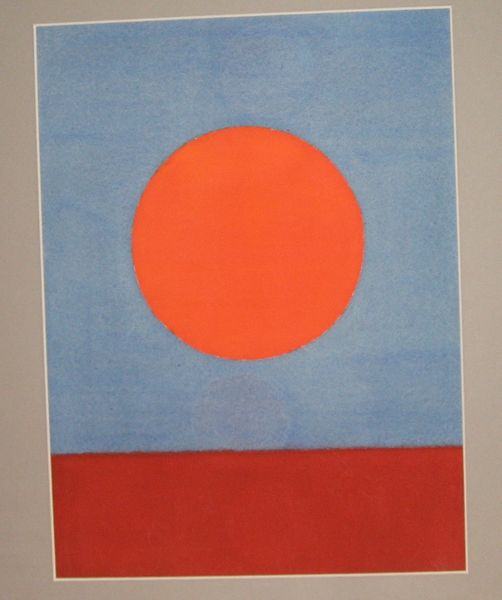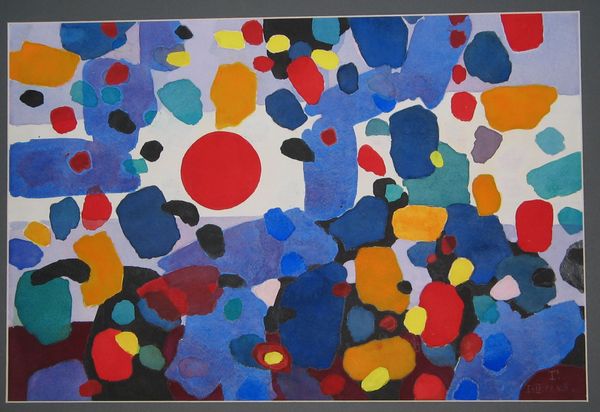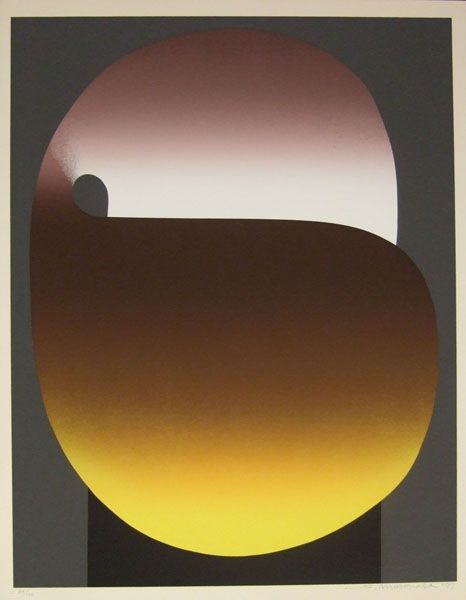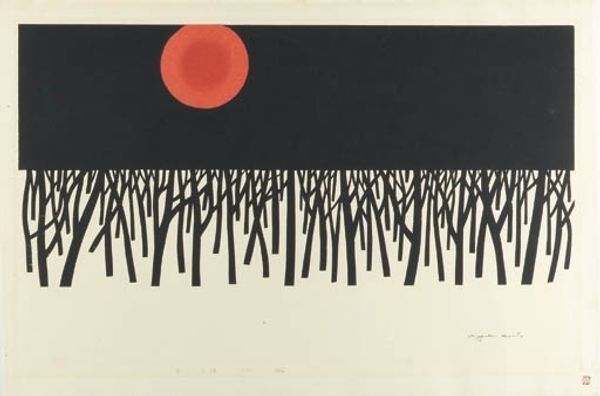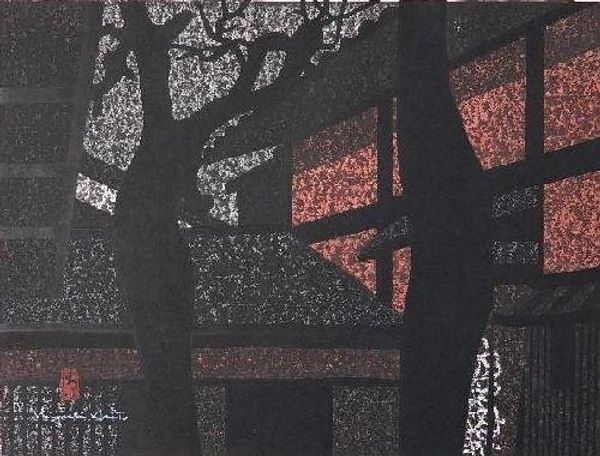
Illustration to the collection of poems by M. Bazhan 'Legacy' 1978
0:00
0:00
hryhoriihavrylenko
Private Collection
print, woodcut
#
negative space
# print
#
landscape
#
acrylic on canvas
#
woodcut
#
naive art
#
line
#
watercolour illustration
Copyright: Hryhorii Havrylenko,Fair Use
Curator: Here we have Hryhorii Havrylenko’s "Illustration to the collection of poems by M. Bazhan 'Legacy'," a woodcut print created in 1978. It depicts a silhouetted landscape under a bright, full moon. Editor: My first impression is the stark contrast and dreamlike quality. The composition is strikingly simple, with the almost brutal graphicness of the black trees against the strong blue sky. It gives me a sense of folklore and the unknown. Curator: Given it's an illustration for a collection of poetry, this visual language really reinforces that connection to cultural storytelling. We can read this landscape as being part of Bazhan's "Legacy," which carries complex narratives of Ukrainian identity, oppression, and cultural preservation within the Soviet Union at the time. The print serves as a visual echo chamber of this historical context. Editor: That makes me consider the artist's choices of material. Why a woodcut print? Was there something about the labour of this technique—the repetitive act of carving, the physical engagement with the wood itself—that resonated with this theme of "legacy," of things passed down through hard work and tradition? And did the limited availability of some art supplies at that historical moment dictate in some ways the artmaking? Curator: I think you're spot on. The material constraints, the specific techniques utilized, these reflect very directly the political climate and accessibility. These artistic decisions emphasize the endurance and tangible aspect of this heritage. The simplicity of color further underlines its message, speaking to resilience. Editor: Looking again at how those little white dots are placed within the forest canopy; this reminds me also that what we can consider today “naive art” could have been, during the 70's, one of the only allowed means of expressing something about oneself without facing heavy censorship from the state. Curator: Absolutely, a point well taken. This brings an essential reading of subversive action and covert messaging. We can observe that in art where the symbolic can say more than actual straightforward descriptions. Editor: Looking at the work from this angle offers a whole new layer of depth, seeing the resistance embedded within the materials and naive stylization. I keep finding more there than I originally perceived. Curator: Exactly. Engaging with Havrylenko's art through this critical historical lens unlocks layers of political and personal meaning within a seemingly simple scene.
Comments
No comments
Be the first to comment and join the conversation on the ultimate creative platform.
